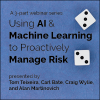Business Transformation Requires Transformational Leaders
Leadership and teaming skills are front and center in times of rapid change. Meet today’s constant disruption head on with expert guidance in leadership, business strategy, transformation, and innovation. Whether the disruption du jour is a digitally-driven upending of traditional business models, the pandemic-driven end to business as usual, or the change-driven challenge of staffing that meets your transformation plans — you’ll be prepared with cutting edge techniques and expert knowledge that enable strategic leadership.
Subscribe to Arthur D. Little's Culture & Leadership Newsletter
Insight
Setting the Course for Automotive Recovery After COVID-19
The Flywheel: Your Digital Shift Foundation
The COVID-19 outbreak is impacting all businesses globally. It’s impacting staff, contractors, and staffing levels; it’s impacting the supply chain; and it’s impacting processes. Despite companies having crisis management and business continuity plans, current decision-making tools and dashboards are not adequate for dealing with COVID-19-related decision-making given the geographic scale of the disruption. Established risk management methodologies and approaches tend to be static in nature and lead to models that are backward-looking.





























